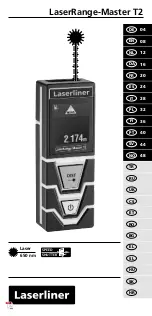
1.
The equipment may not cause harmful interference.
2.
The equipment must accept any interference received, including interference that may cause
undesired operation.
Changes or modifications to this equipment not expressly approved by the party responsible for
compliance could void the user's authority to operate the equipment. This equipment has been tested
and found to comply with the limits for a Class A digital device, pursuant to Part 15 of the FCC rules.
These limits are designed to provide reasonable protection against harmful interference when the
equipment is operated in a commercial environment. This equipment generates, uses and can
radiate radio frequency energy and, if not installed and used in accordance with the instruction
manual, may cause harmful interference to radio communications. Operation of this equipment in a
residential area is likely to cause harmful interference, in which case the user will be required to
correct the interference at their expense. The following techniques can be used to reduce
interference problems:
1.
Disconnect the equipment from its power source to verify that it is or is not the source of the
interference.
2.
If the equipment is connected to the same outlet as the device experiencing interference, connect
the equipment to a different outlet.
3.
Move the equipment away from the device receiving the interference.
4.
Reposition the receiving antenna for the device receiving the interference.
5.
Try combinations of the above.
Product components
Make sure that all components have been received. If any items are missing or damaged, contact the
manufacturer or a sales representative immediately.
Accessories
The following accessories are provided with the product and are located in the drawer:
• Laminated quick reference guide
• User manual
• Certification of the product factory calibration
• Socket for mains power connection
• Tool for removing plugs and sample tubes
• 2 x DN8 to DN6 reduction sleeves to connect DN6 tubes to the product
• 2 plugs for the IN and OUT sockets to prevent measurement cell contamination
Product overview
The conductivity certification system is a portable test bed for rapidly and accurately calibrating and
verifying in-line conductivity measurement loops through direct use of the process sample and
comparison with our reference system.
It is particularly appropriate for pure and ultra pure water applications with weak conducting solutions
for which there is no reliable calibration solution. Indeed, any solution whose conductivity is inferior to
100 μs/cm is not stable in contact with air, as the dissolution of the CO
2
from ambient air leads to an
increase in the order of 1 to 2 μS/cm. It is therefore impossible to calibrate a conductivity loop
dedicated to pure water measurements of <10 μS/cm using a calibration solution of known similar
conductivity (KCl solution).
Any deviation observed between the value displayed by the system and that displayed by the
conductivity loop under validation/calibration can be due to several factors including:
• Fouling of the conductivity sensor under test due to the accumulation of insulating layers on the
electrode surface leading to a change of the cell constant
• Sampling issues such as poor sensor installation, insufficient immersion, air bubbles, etc.
• Incorrect controller resistivity/conductivity and/or temperature input calibration
English
7
Summary of Contents for Polymetron 9526
Page 130: ...1 2 3 4 5 2 DN8 DN6 DN6 2 IN OUT 100 s cm CO2 1 2 S cm KCI 10 S cm 130...
Page 134: ...3 0 35 2 mm2 AWG 22 14 105 4 7 1 131 4 1 5 9 2 6 10 3 7 4 8 1 6 4 6 2 1 4 134...
Page 136: ...5 1 5 Back 2 6 Menu Settings Menu 3 HOME Main Measurement 7 4 ENTER SD 6 136...
Page 206: ...EMC 206...
Page 207: ...EMC A A IECS 003 A FCC 15 15 FCC 1 2 15 FCC 1 2 3 4 5 207...
Page 208: ...2 DN8 DN6 DN6 2 100 CO2 1 2 10 KCl 208...
Page 212: ...30 2 1 D1 2 D2 OUT 20 60 30 212...
Page 213: ...3 0 35 2 2 AWG 22 14 105 C 4 7 1 209 213...
Page 215: ...Startup 203 1 2 3 4 5 5 5 1 5 BACK 2 SD 6 MENU 3 HOME 7 4 ENTER SD 215...
Page 245: ......








































